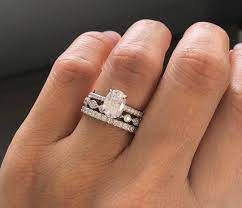Indoor soccer has become a popular alternative to traditional outdoor soccer, offering a faster-paced and action-packed version of the sport. Whether you're new to the game or an experienced player, understanding the time limits for indoor soccer games is essential. So, how long are indoor soccer games? While the duration can vary depending on the league and age group, there are general guidelines that help define the time limits for these exciting games.
In this article, we’ll dive into the official time limits for indoor soccer games, explore the differences between professional and youth leagues, and explain what factors can influence game duration.
The Duration of Indoor Soccer Games: A General Overview
In indoor soccer, the game duration is typically shorter than its outdoor counterpart. While outdoor soccer games usually consist of two 45-minute halves, indoor games tend to be broken up into shorter segments. The length of indoor soccer games varies, depending on the league, the level of play, and the age group.
Professional Indoor Soccer Leagues
For professional indoor soccer, such as the Major Arena Soccer League (MASL), the game is split into four quarters, each lasting 15 minutes, with a 10-minute halftime. This format keeps the action quick and continuous, providing a thrilling experience for both players and spectators.
Game Time: 4 quarters of 15 minutes each (60 minutes total)
Halftime: 10-minute break
Overtime: Overtime periods or a shootout may be used in case of a tie.
The shorter, more frequent intervals help keep the game fast-paced and high-energy, which is ideal for indoor play. Substitutions are frequent, and the indoor environment allows for quicker transitions between offense and defense, keeping the game moving.
Youth Indoor Soccer
In youth indoor soccer, the time limits are adjusted to accommodate younger players' fitness levels and attention spans. The duration varies by age group and league rules.
Ages 6-10: Games typically consist of two 20-minute halves. This allows younger players to stay focused while enjoying the sport.
Ages 11-14: For this age group, games may last two 25-minute halves. This provides a more competitive environment as players get older.
Ages 15 and above: Teenagers and older players often play with either two 30-minute halves or four 15-minute quarters, resembling the adult game format.
The rules governing youth indoor soccer are often designed to ensure that players get enough physical activity without overexerting themselves.
The Structure of Indoor Soccer Time: What Affects Duration?
The clock in indoor soccer operates on a "running clock" format. This means that the game clock continues running even during play, unless specific events cause it to stop. In general, the only times the clock is stopped are for:
Injuries: If a player is injured, the referee may stop the clock to ensure proper attention is given.
Timeouts: Some leagues allow each team to take a timeout during a game.Fouls and Free Kicks: The clock may also stop for certain fouls, especially if the referee needs to administer a penalty kick or a free kick.
Additionally, in some leagues, a “stop-time” rule may be in effect during the final minutes of the game, particularly if the match is close or tied. This is designed to ensure that the game isn’t affected by a loss of time due to stoppages.
What About Overtime in Indoor Soccer?
If a game ends in a tie, especially in tournaments or playoff settings, overtime may be used to determine a winner. Overtime periods in indoor soccer are typically shorter than regulation time, with each period ranging from 5 to 10 minutes.
Golden Goal (First to Score Wins): Some leagues use a golden goal rule during overtime, meaning the first team to score in overtime wins the game.
Penalty Shootout: If the game remains tied after overtime, penalty shootouts are often used to decide the winner. Players take shots on goal, and the team with the most goals after a set number of attempts wins.
These overtime rules ensure that matches don’t drag on for too long and that a winner is determined, making the experience more exciting for everyone involved.
Conclusion: Understanding the Time Limits of Indoor Soccer Games
So, how long are indoor soccer games? The duration of indoor soccer matches depends on several factors, including the league, age group, and specific rules in place. Professional indoor soccer games typically last 60 minutes, divided into four 15-minute quarters, while youth games may be shorter, often ranging from 40 to 60 minutes, depending on the players’ age.
Regardless of the time limit, indoor soccer offers an energetic and fast-paced game that keeps both players and spectators engaged. Whether you're playing in a recreational league or professionally, knowing the time structure of the game can help you better prepare for the exciting matches ahead. Keep in mind that while the official time limits give you an idea of what to expect, it's always a good idea to check the rules of your specific league to get the most accurate information.
So, next time you step onto the indoor soccer field, you’ll know exactly how long the action-packed game will last—and how to make the most of every minute!





















